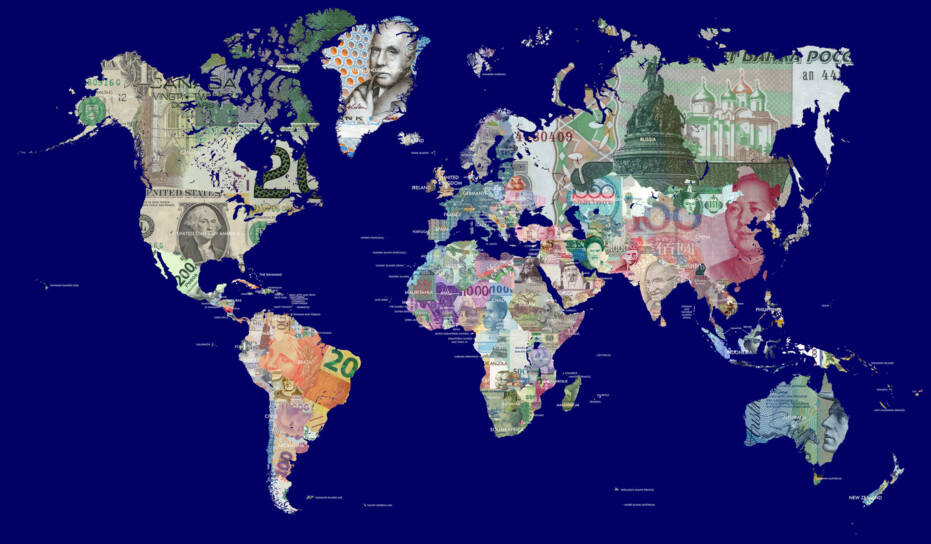The successive shocks linked to the COVID pandemic and the war in Ukraine have had a clear negative impact on African economies. They have revealed, materialized and even exacerbated major structural weaknesses. Over-indebtedness and food insecurity, with their economic, political and social ramifications, are the chief hallmarks.
During the pandemic, growth in Africa receded on the back of plummeting commodity prices and expatriate remittances, as well as a collapse in tourism. Hindrances to the mobility of persons and merchandise and the disorganization of transport systems contributed largely to the recession.
These difficulties were compounded by the effects of the war in Ukraine: cereal, oil and fertiliser supply glitches, along with spiking fuel product prices, harmed the financial situation of African states, especially amid global monetary tightening and US dollar appreciation. Commodity pressures also fuelled inflation, which contributed widely to increasing food insecurity, and sparked social and political unrest.
Weakening budget and external situations across the continent
Some of the continent's major economies have been weakened both in terms of their fiscal and external accounts, highlighting the weaknesses in their growth models. Dependence on imports (food, energy, intermediate products and equipment), reliance on abundant and cheap financing, and low fiscal revenue have greatly contributed to the difficulties. Egypt, Ethiopia, Kenya and even Ghana – all examples of the African dynamism in the past decade – are now battling economic crises that can be largely pinned to their weak fiscal and external account balances.
The consequences of the war in Ukraine triggered a sharp deterioration in the current account balances of most African economies, notably those which are heavily dependent on commodity imports. Steepening prices for oil and basic agricultural products dented their terms of trade. Import costs were also pushed higher by depreciation of many African currencies. This depreciation, combined with rising interest rates, increased the burden of servicing foreign debts, especially those denominated in dollars. Only a handful of commodity-extracting countries (Angola, South Africa, Algeria, Botswana, etc.) fared relatively better, benefiting from high prices that helped cushion the impact of the various shocks.
More and more situations of over-indebtedness
The instances of unsustainable debt or a higher risk of over-indebtedness have increased across the continent, which houses more than half the cases witnessed worldwide. The crisis has underscored the continent’s weak fiscal resources that force countries to use debt to finance spending and increases the risk of over-indebtedness. Tax revenues represented an average of 16% of GDP in 2020 for the 31 largest African economies, well below the average posted by OECD countries (33.5%) or Latin American countries (21.9%). At the same time, budget revenues have been constrained by the contraction of activity due to the crises, while African governments have had to deploy support measures that have weighed heavily on their accounts (subsidies, tax relief).
In addition to the rise in indebtedness, there has also been an increase in the cost of debt, with interest rates on the rise in the context of the fight against inflation. This rise in external public debt servicing follows the trend observed over the last decade, linked to the increase in the share of private creditors, which rose from 29% to 43% between 2009 and 2019 in sub Saharan Africa. Issuance volumes by African nations increased steadily on the international capital markets, where interest rates are considerably higher than those charged by multilateral lender organisations or bilateral official partners.
Accordingly, the accumulation of costlier debt amid a challenging economic environment has led to more cases of over-indebtedness and has triggered the downgrade of many sovereign debt ratings, with some governments defaulting on their debt repayments. While a third of the 36 African countries covered by an IMF debt viability study was already deemed to be in a situation of over-indebtedness or at risk of it prior to the pandemic, the two successive shocks took the share to 100%.
Economic woes augment social, political and security problems
Many of the continent's economies have experienced, and will continue to experience, a marked slowdown in economic growth.
For example, Egypt’s growth rate for the fiscal year 2021-2022, which was estimated at 6.6% year-on-year, is forecast to slow to 3.5% in FY 2022-2023, and is expected to rise to only 4.0% in 2023-2024, i.e. below its pre-pandemic rate.
Overall, Africa’s economic growth stood at 3.9% in 2022 and may reach only 3.5% in 2023, which should be considered against the annual demographic growth rate of 2.6% over the period. The gap therefore leaves little headroom for development in the continent, which softened between 2019 and 2020.
Along with the inflationary shock, economic policy tightening has the potential to unleash social unrest. Numerous examples of social unrest have been observed since 2020 across Liberia, Tunisia, Morocco, Senegal, South Africa and Kenya, among others. Discontent is fuelling political upheaval in the shape of coups d’état, as has been the case in Guinea, Mali, Burkina Faso and Sudan. This is providing fertile ground not only for Jihadist action in the Sahel, the Horn of Africa and West Africa, but also for rebellions in countries such as Cameroon, the Central African Republic, the Democratic Republic of Congo and Ethiopia, as well as crime, notably in Nigeria, which is more widely affecting the continent.
